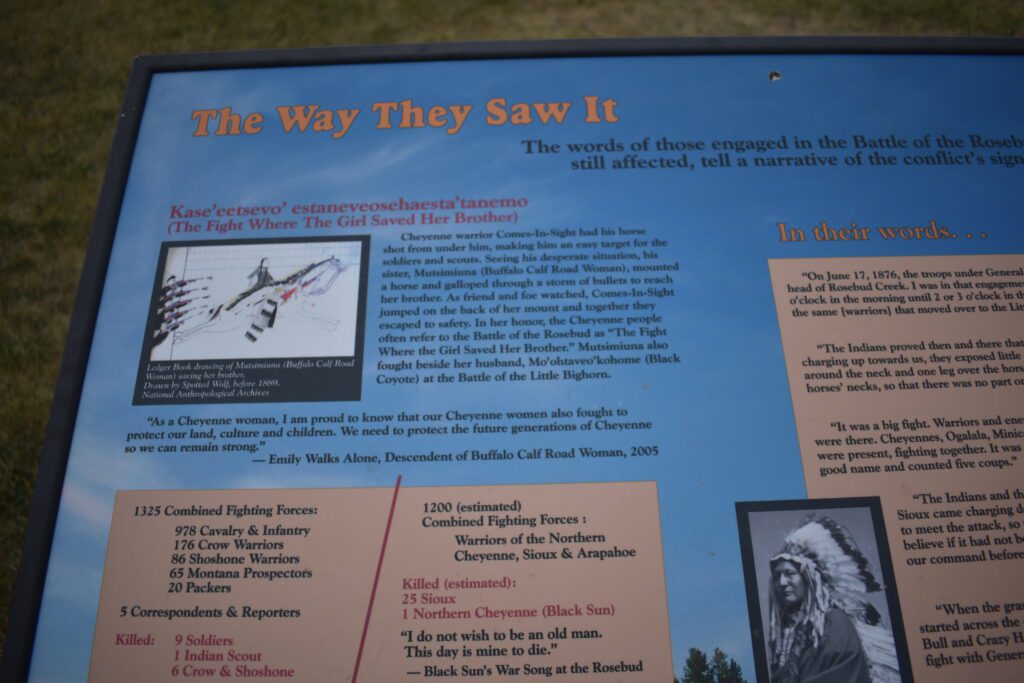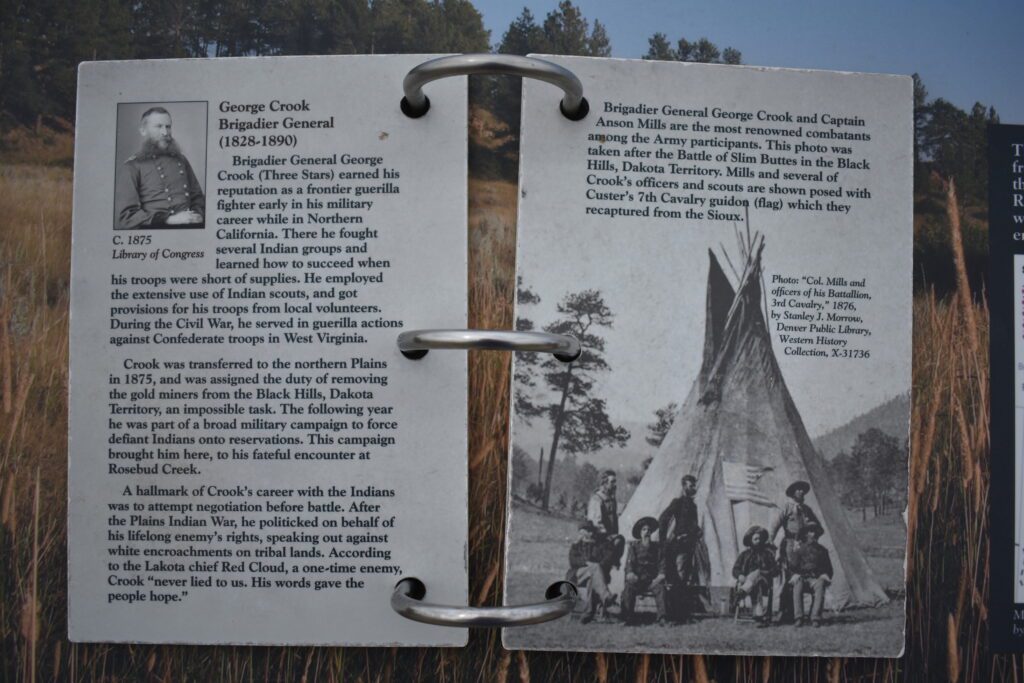News
History: Rosebud Battle Happened on June 17, 1876

On June 25, 1876, 149 years ago, General George Armstrong Custer and all the men in his the 7th Cavalry, lost their lives along the Little Bighorn River in Montana to a combined force of Sioux, Cheyenne and Arapaho warriors.
Preceding the Custer fight was the Battle of Rosebud Creek, or in Cheyenne terms, Battle Where The Girl Saved Her Brother. Buffalo Calf Road Woman, seeing her brother fall, rode into the battle and rescued him. Later, she fought alongside her husband in the Battle of the Greasy Grass where Custer met his fate.

Although the Indian record of the battle is mainly oral tradition, this is the report of the battle from the U.S. Army’s perspective.
Here in the Cheyenne Weekly Leader, July 1, 1876, was a telegram from the front lines at the battle. – Pitched Battle Between Crook’s Command and Sitting Bull’s Warriors. Crook’s Loss, 10 Killed, 4 Mortally Wounded, 10 Dangerously and 80 Slightly Wounded. [Special Telegram to The Leader in Camp on Rosebud Creek, Montana June 17. (Via Fort Fetterman June 23rd.) We have met the Indians and after a hard-fought battle, are now camped on the scene of carnage, having repulsed the foe. The command left the wagon train yesterday morning at our late camp on Goose Creek, and marched down the Rosebud, expecting to strike the Sioux at its mouth. After marching a few miles this morning, shots were heard in advance and soon a few small bands of Sioux were seen on the high bluff’s above the narrow and high walled valley in which the command had halted.
Soon the firing became livelier, the bluffs were covered with Indians, and it became apparent that a pitched battle was imminent. Skirmishers were thrown out on either flank and at this moment the Sioux attempted a charge, which was quickly stopped by the rapid advance of our Indian allies, who were thrown out on our right. Here the firing became general and continued from eight in the morning until nearly two in the afternoon when the Sioux drew off and left us in possession of the field.
It was one of the most desperate battles known in the annals of Indian warfare. Our command numbered but about eight hundred men, while there were fully fifteen hundred Sioux engaged, with a large force in reserve and only a few miles distant from the field, this fact having been discovered by our Crow and Shoshone allies, whose conduct throughout was most gallant. (Many historians today agree that the army probably inflated the Indian numbers)

Shortly after the fight began the cavalry made a brilliant charge and without the loss of a man, succeeded in dislodging the Sioux from their best position, driving them back over a mile, killing several Indians, who were borne away by their comrades.
Col. Mills commanded the detachment of the Third cavalry which made this gallant charge, and was composed of companies A, E, G and M. Just after this charge some of the scouts came in and informed Gen. Crook that there was a large Indian village in sight, and heat once sent a detachment of three companies under Col. Mills, with orders to make a detour and capture the village, but before he had gone far they were recalled, being needed on the field, the Sioux having discovered their object and redoubling their attack, so that when the battalion under Mills returned, the hardest work of the battle was in progress. It was here that our loss was the greatest.
Our Indian allies lost some ponies and captured some from the Sioux while we lost ten or fifteen horses and a few guns. Thirteen dead Sioux were found on the field, and it is certain that a number more were killed, with the usual proportion of wounded. Several Sioux ponies wore killed, and Gen. Crook’s horse was shot under him. The officers and soldiers all displayed marked gallantry.
The nature of the ground making infantry advantageous, Gen. Crook has ordered five companies to join him at once, the cavalry meantime continuing operations on the plains and in the hills, should definite information of villages be obtained. One month’s supply of rations is in camp.

In the morning we shall start for the camp on Goose Creek where the wagon train, under guard of one hundred men, was left yesterday. We will obtain fresh supplies and ammunition and march against the Sioux immediately. Our Crows and Snakes have become discouraged, and desire to return to their agencies, but have been induced to stay with us they fear that their villages have been attacked by the Sioux since they joined the expedition.
Gen. Crook had not anticipated that the Sioux would fight a pitched battle, so that this had in it many elements of a surprise. The battlefield during the heat of the fray was a most exciting spectacle. The Indians completely surrounded our command, forming a circle fully five miles in circumference, from every point on which they poured in a galling fire. They were magnificently mounted, armed with the finest long-range rifles, had an almost impregnable position, and wore in the best possible shape for a long and hard fight.

“A Drawn Battle” – We regret that the news conveyed to our readers through the Leader from Gen. Crook’s command, is not as encouraging as we anticipated. Our correspondent gives the result as “a drawn battle,” after several hours of hard fighting.
It must be admitted that the Sioux will fight, and that they are bold enough to attack, when permitted to choose their ground. Our boys in blue fought well and kept their ground, the Indians retiring from the field. While we know our losses, that of the Indians is not ascertained, as they will, under all circumstances, cover up their casualties, giving their opponents no opportunity to learn the extent of their losses.
Gen. Crook is reported to have retired to his old camp on Goose Creek, for the purpose of getting fresh supplies and ammunition; he will therefore soon bo able to renew the fight, if the Sioux remain in that vicinity. Gen. Terry’s and Gen. Gibbon’s commands must be within a few day’s march of the battle field, and they will undoubtedly join Gen. Crook in a combined attack upon the Indian stronghold on the Rosebud.
The village which was in sight of our brave soldiers when fighting Sitting Bull’s warriors, is doomed; the great battle of this summer’s campaign will be fought soon, if it has not already taken place.
Short on supplies and concerned for his wounded men, Crook went back to his camp on Goose Creek near present day Sheridan, and took no part in the famous battle that happened nearly 10 days later on the Little Big Horn River.
(Dioramas courtesy of Tom Warnke, Sheridan. Information signs at Rosebud Battlefield)

